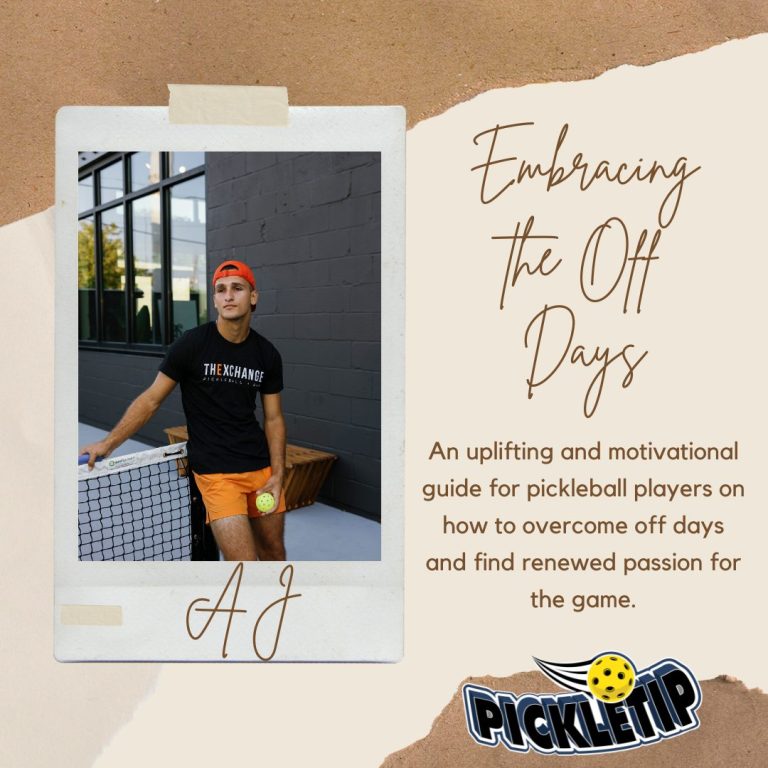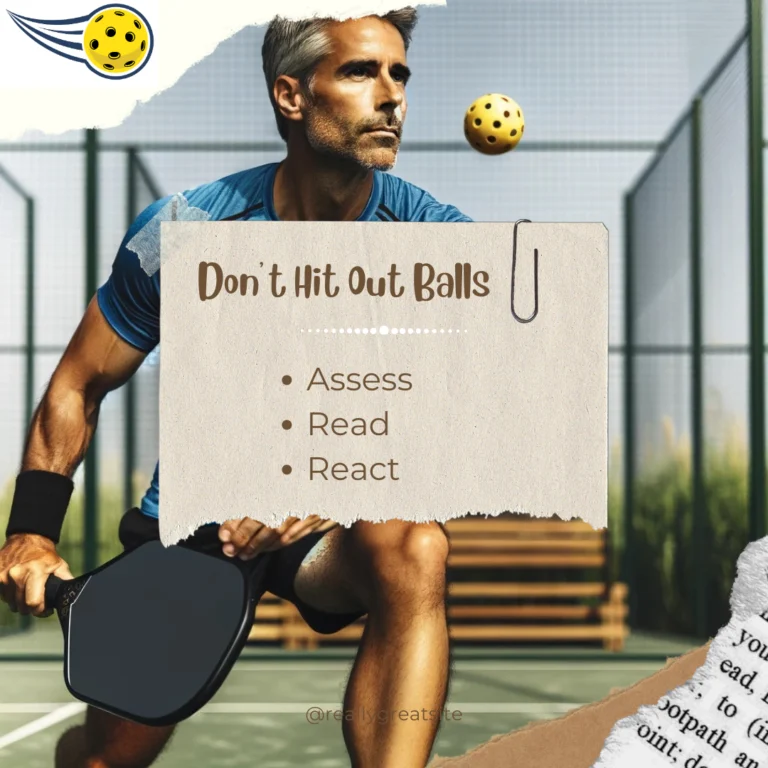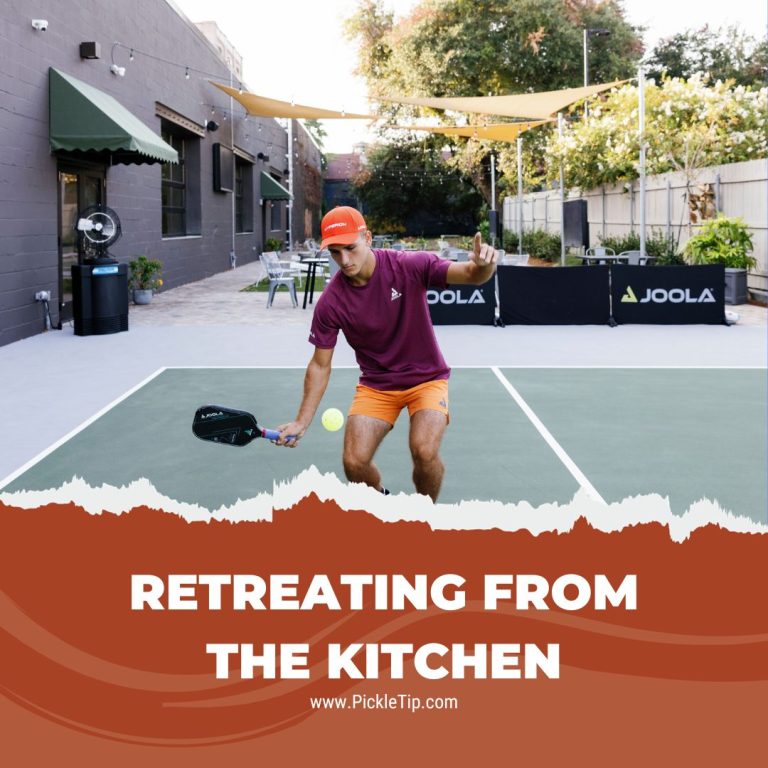Pickleball Kitchen Strategy: Tips, Techniques, and Drills
In this article, we will cover essential pickleball kitchen strategies, tips, techniques, and drills to improve your game. Learn how to get to the kitchen quickly, control the net, and more. By mastering these strategies, you’ll increase your chances of winning points and dominating the court.
Getting to the Kitchen Quickly and Safely
As mentioned earlier, getting to the kitchen quickly but safely is crucial in pickleball. Here are some tips to help you achieve this:
- Develop proper footwork: Practice your footwork to move efficiently and safely on the court. Quick, small steps and controlled movements will allow you to reach the kitchen without losing balance or putting yourself at risk.
- Anticipate your opponent’s shots: Pay attention to your opponent’s body language and shot preparation. This will help you anticipate their shots and move quickly to the kitchen.
- Keep your eye on the ball: Tracking the ball’s trajectory will help you position yourself effectively and avoid collisions with other players or obstacles on the court.
- Work on your agility and speed: Incorporate agility and speed drills into your practice routine to help you move more efficiently on the court.
Controlling the Net
Here are some tips for controlling the net in pickleball:
- Always be ready: Keep your paddle up and your knees slightly bent, ready to react to any incoming shots.
- Move as a team: In doubles, ensure you and your partner move together and maintain a strong presence at the net.
- Work on your volleys: Practice your volleys to increase accuracy and control, allowing you to dictate the pace of the game.
- Stay aggressive: Keep the pressure on your opponents by consistently attacking the net and looking for opportunities to hit winning shots.
Pickleball Kitchen Drills
Improve your pickleball kitchen strategy with these effective drills:
- Dinking drill: Practice your dinks by hitting soft shots back and forth with a partner at the kitchen line. Focus on accuracy, control, and consistency.
- Volley drill: Stand at the kitchen line and have a partner feed you balls to volley. Work on quick reflexes, paddle control, and placement.
- Kitchen line movement drill: With a partner, practice moving along the kitchen line while maintaining your volley. This drill will improve your footwork, balance, and coordination at the net.
- Third shot drop drill: From the baseline, practice hitting third shot drops into the kitchen. This will help you develop touch and control for this essential shot in pickleball.
Questions and Answers
What are some common mistakes players make in the kitchen?
Some common mistakes include not keeping the paddle up and ready, failing to move as a team in doubles, and being too aggressive with shots, leading to errors or going out of position.
How can I improve my dinking skills in the kitchen?
To improve your dinking skills, focus on practicing soft touch shots with accuracy and consistency. Work on your paddle control, and incorporate dinking drills into your practice routine. Additionally, develop an understanding of your opponent’s positioning and movements to exploit their weaknesses with well-placed dinks.
How can I practice kitchen shots on my own?
When practicing alone, you can use a pickleball machine or a wall to work on your kitchen shots. Set up a target area in the kitchen and practice hitting accurate and controlled shots consistently. Focus on improving your touch, placement, and consistency for various kitchen shots, such as dinks, volleys, and third shot drops.
What is the best way to transition from the baseline to the kitchen?
The best way to transition from the baseline to the kitchen is by hitting an effective third shot drop, which lands softly in the opponent’s kitchen. This shot will give you time to move forward and get into position at the kitchen line. Maintain proper footwork, anticipate your opponent’s shots, and practice your third shot drops for a smooth transition.
What should I do if my opponent keeps attacking me with hard shots at the kitchen line?
If your opponent keeps attacking you with hard shots at the kitchen line, try to stay low, keep your paddle up, and use a soft block or counterattack to neutralize their shots. Focus on maintaining good positioning and anticipating their shots to react quickly and effectively. If necessary, consider adjusting your strategy by moving back slightly from the kitchen line to give yourself more time to react and defend.
How can I avoid foot faults in the kitchen?
To avoid foot faults in the kitchen, always be aware of your foot placement and the boundaries of the non-volley zone. Practice maintaining balance and proper footwork while moving along the kitchen line. Additionally, ensure you do not step on or over the line when hitting a volley, and avoid stepping into the kitchen before the ball bounces if you are playing a shot out of the air.
Own the Kitchen
Mastering pickleball kitchen strategy is essential for improving your game and increasing your chances of success on the court. By focusing on getting to the kitchen quickly and safely, controlling the net, and practicing relevant drills, you’ll be well on your way to dominating the kitchen and outplaying your opponents. Remember to always prioritize safety, refine your skills, and enjoy the game of pickleball.








3 Comments